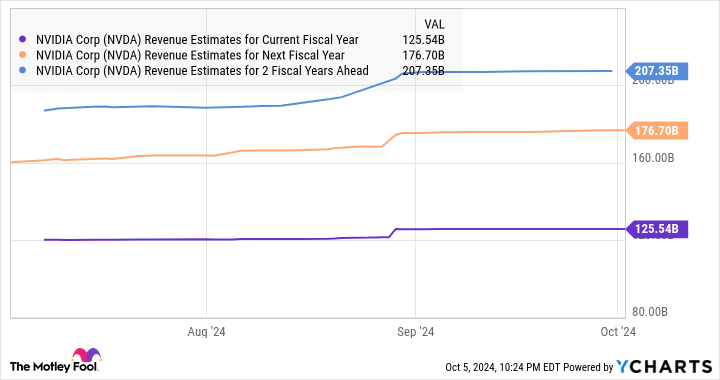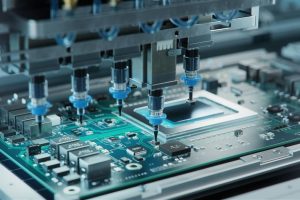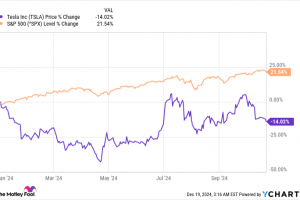
Shares of Nvidia (NASDAQ: NVDA) and Palantir Technologies (NYSE: PLTR) have delivered stunning gains of 152% and 133%, respectively, in 2024, as both companies have been benefiting from the fast-growing adoption of artificial intelligence (AI) hardware and software. That is also why both of them are now trading at expensive valuations.
However, a closer look at their prospects indicates that Nvidia and Palantir’s AI-powered growth is here to stay, as both of them stand to gain from massive end-market opportunities. Here, let’s examine which of these two AI stocks investors should consider buying right now following their stunning gains so far this year.
The case for Nvidia
Nvidia has been delivering robust growth quarter after quarter thanks to its market share of more than 85% in AI chips, which analysts at investment research firm Third Bridge believe is sustainable, thanks to the arrival of the company’s next-generation Blackwell processors.
Nvidia’s revenue in the second quarter of fiscal 2025 (which ended July 28) shot up 122% year over year to $30 billion. More importantly, the company’s pricing power helped it increase its non-GAAP (generally accepted accounting principles) gross margin by 4.5 percentage points last quarter to 75.7%. As a result, the growth in the company’s bottom line outpaced its revenue growth.
Nvidia reported $0.68 per share in earnings in fiscal Q2, an increase of 152% from the year-ago period. And now, analysts at Japanese investment bank Mizuho have raised their sales expectations of Nvidia’s AI graphics cards for 2025. Mizuho is expecting Nvidia to sell 8% to 10% more AI graphics cards next year from its prior guidance issued in July.
The company is expected to sell between 6.5 million to 7 million AI GPUs (graphics processing units) next year, driven by an improving supply chain that is expected to help it manufacture more chips. Given that Nvidia has reportedly priced its upcoming Blackwell processors between $30,000 to $40,000, which is identical to what it charges for its current generation flagship processor — the H200 — there…
..






